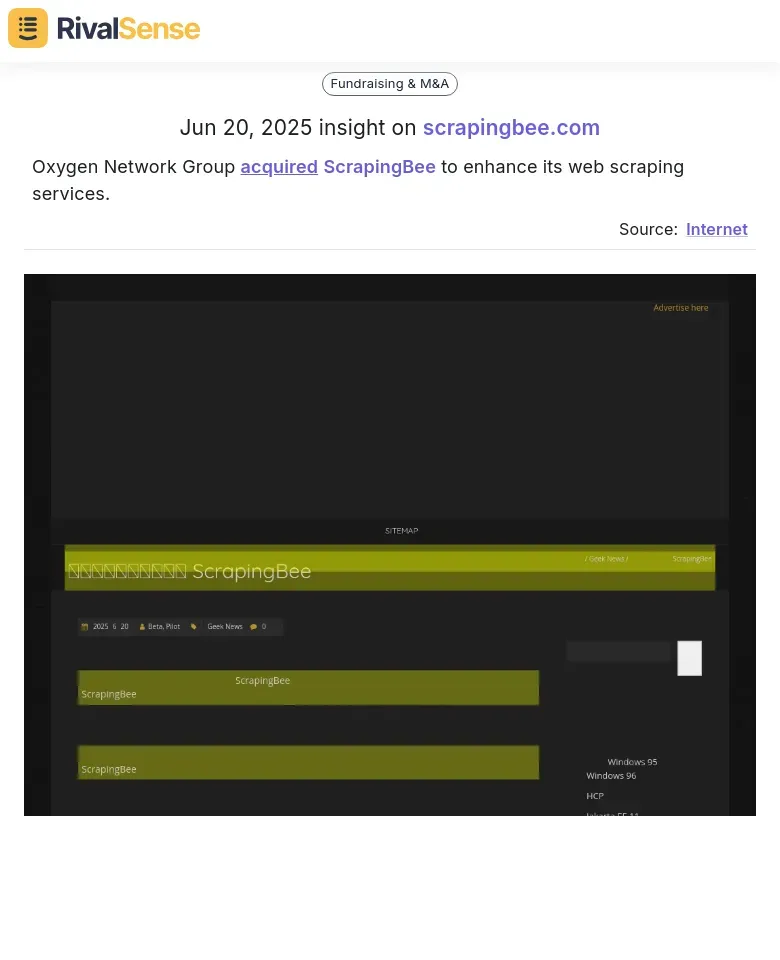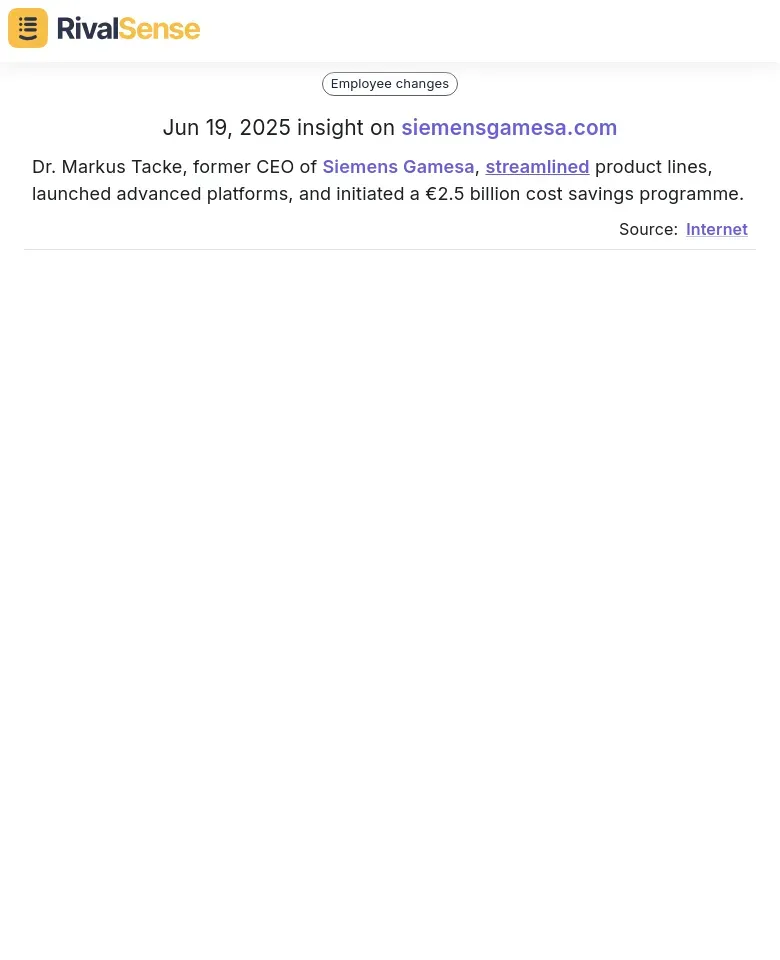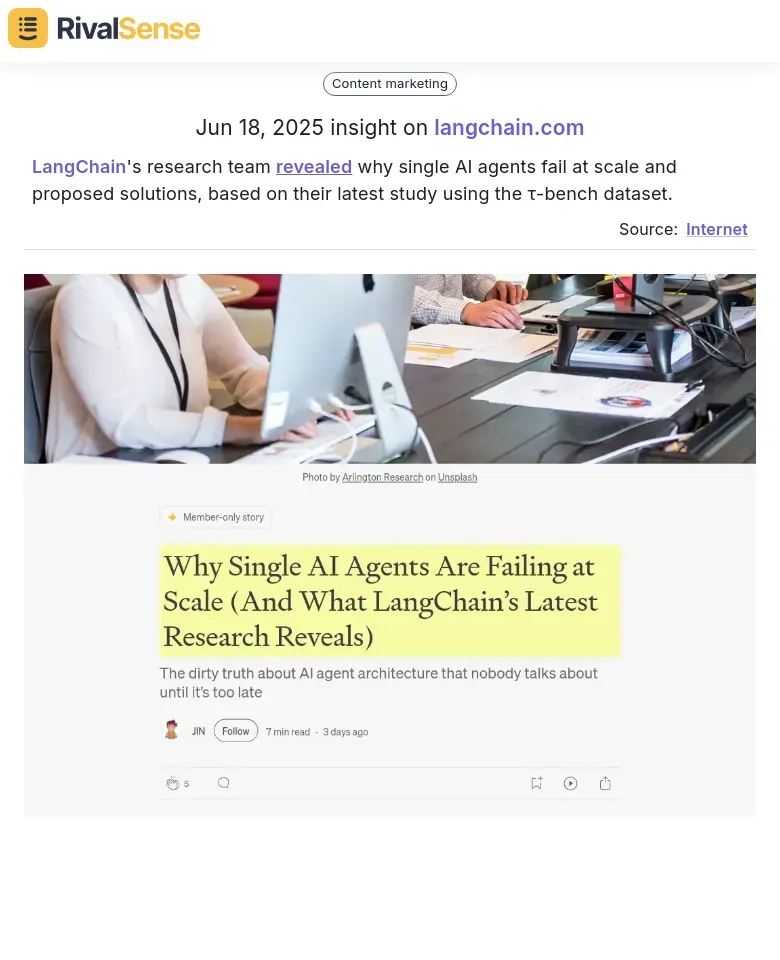Strategic Competitor Insights: Internet-Based Comparative Analysis
In today's fast-paced business environment, understanding your competitors isn't just beneficial—it's essential for survival and growth. Strategic competitor insights empower businesses to anticipate market shifts, identify opportunities, and mitigate threats before they impact performance. Internet-based comparative analysis leverages digital tools to gather and analyze data about competitors' online presence, marketing strategies, and customer engagement. By examining websites, social media, and reviews, you gain a comprehensive view of your market position and identify differentiation opportunities.
Practical steps to get started include:
- Identify Key Competitors 👀 - Focus on businesses competing directly for your customer segments
- Leverage Digital Tools ⚙️ - Use automated tracking solutions for real-time insights
- Analyze and Act 📈 - Review data regularly to spot trends and adjust strategy
Integrating this analysis drives sustainable growth by keeping you ahead of market movements.
Enhancing Capabilities Through Strategic Acquisitions
Strategic acquisitions rapidly expand service offerings and technological capabilities, providing immediate competitive advantages. Acquiring companies with complementary technologies allows businesses to leapfrog competitors in innovation. For example, integrating an AI startup could instantly upgrade your product's intelligence features.
Real-World Example:

Oxygen Network Group's acquisition of ScrapingBee demonstrates how strategic purchases enhance web scraping capabilities. Monitoring such moves reveals competitors' expansion strategies and helps identify partnership or acquisition targets before market shifts occur.
To leverage acquisitions effectively:
- Identify capability gaps where competitors outperform you
- Assess targets for technology, team, and market alignment
🔑 Key integration steps:
| Phase | Action |
|---|---|
| Due Diligence | Evaluate assets, liabilities & cultural fit |
| Integration | Merge technologies/teams with clear roadmap |
| Retention | Secure key talent from acquired company |
| Communication | Explain benefits to customers transparently |
Proactive monitoring of industry startups uncovers opportunities before competitors act.
Streamlining Operations for Competitive Advantage
Operational efficiency directly impacts cost savings and competitive positioning. Analyzing competitors' strategies reveals gaps in your processes and opportunities for optimization. Practical approaches include automating repetitive tasks, adopting lean principles, and using data analytics for decisions.
Leadership Impact Example:

Dr. Markus Tacke's €2.5B cost-saving program at Siemens Gamesa shows how leadership changes drive operational overhauls. Tracking executive moves provides early signals of competitor efficiency pushes that could disrupt market dynamics.
▶️ Operational streamlining checklist:
- Audit current processes
- Identify inefficiencies
- Prioritize improvement areas
- Implement automation solutions
When launching platforms while optimizing existing products:
- Analyze competitor offerings for market trends
- Allocate resources strategically between innovation and core products
- Set clear objectives with iterative feedback loops
Key lessons from large-scale programs:
1. Set measurable KPIs for savings/efficiency
2. Engage cross-functional teams
3. Pilot initiatives before scaling
4. Maintain flexibility for market changes
Innovating at Scale: Overcoming Challenges in AI
Scaling AI applications introduces performance bottlenecks and complexity challenges. Distributed computing frameworks and modular architectures address these issues while ensuring adaptability. Understanding these limitations enables businesses to innovate effectively in tech-driven markets.
Research Breakthrough Example:

LangChain's study on single-agent failures at scale demonstrates how research insights reveal industry pain points. Tracking such publications helps anticipate technological shifts and adopt solutions before competitors.
Practical implementation steps:
- Assess AI scalability under varying loads
- Adopt modular designs for flexible updates
- Invest in distributed systems for heavy computations
- Monitor research for emerging frameworks
These approaches position companies as leaders while solving real-world scalability constraints.
Applying Competitor Insights to Your Business Strategy
Integrating competitor intelligence starts with identifying key rivals and analyzing their digital footprint. Categorize findings into actionable segments like product offerings, pricing, and marketing tactics. This data benchmarks your performance and reveals strategic gaps.
Automated tools streamline this process by providing real-time updates on:
- Product launches/updates
- Pricing changes
- Marketing campaigns
- Customer sentiment shifts
For example, if competitors dominate a social platform, adapt your approach to outperform them. Always align insights with business goals—avoid reactive strategies. Regular updates keep your approach dynamic amid market evolution.
Conclusion: The Future of Competitive Intelligence
Competitive intelligence is rapidly evolving with AI-driven analytics and real-time monitoring becoming central to strategy. Businesses must embrace automated tracking and predictive tools to maintain advantage. Practical steps include updating analysis tools quarterly, training teams on new technologies, and setting activity alerts.
Foster organizational adaptability through continuous learning. The goal isn't just response—it's anticipation and proactive action based on informed insights.
Transform Data into Strategy
The insights discussed—from acquisitions to operational streamlining—demand consistent monitoring. RivalSense automates this process by tracking competitor activities across websites, social media, and registries. Receive weekly reports covering:
- Product launches/updates
- Pricing changes
- Executive moves
- Partnerships
- Regulatory shifts
Try RivalSense for free today and get your first competitor report to start making data-driven strategic decisions.
📚 Read more
👉 5 Actionable Strategies to Outshine Competitor Branding in Auto Glass
👉 Beginner’s Guide to Regulatory Competitor Insights and Website Teardowns
👉 SIXT's Promotion Extension: Turning Competitor Moves into Strategic Insights
👉 Competitor Digital Transformation Analysis: Your Strategic Guide for 2025
👉 Solving Competitor Supply Chain Gaps in Corporate Insurance
